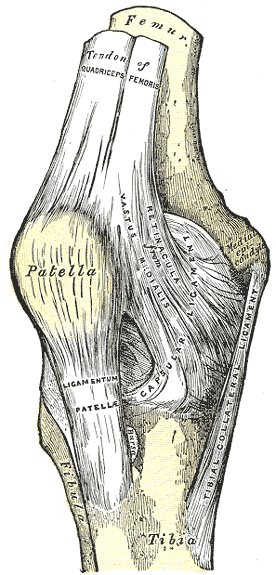Knee outcome survey: Difference between revisions
No edit summary |
No edit summary |
||
| Line 28: | Line 28: | ||
=== Responsiveness === | === Responsiveness === | ||
<div>Standardized effect size of the Activity of Daily Living Scale was 0.63, Guyatt responsiveness index was 1.4, area under the curve was 0.83 (95% confidence interval: 0.72, 0.94), and the minimum clinical important difference corresponded to an increase of 7.1 percentile points. Standardized effect size of the Numeric Pain Rating Scale was 0.72, Guyatt responsiveness index was 2.2, area under the curve was 0.80 (95% confidence interval: 0.70, 0.92), and the minimum clinical important difference corresponded to a decrease of 1.16 points.<ref name="2">Piva SR, Gil AB, Moore CG, Fitzgerald GK. Responsiveness of the activities of daily living scale of the knee outcome survey and numeric pain rating scale in patients with patellofemoral pain. J Rehabil Med. 2009 Feb;41(3):129-35</ref><br></div> | <div>Standardized effect size of the Activity of Daily Living Scale was 0.63, Guyatt responsiveness index was 1.4, area under the curve was 0.83 (95% confidence interval: 0.72, 0.94), and the minimum clinical important difference corresponded to an increase of 7.1 percentile points. Standardized effect size of the Numeric Pain Rating Scale was 0.72, Guyatt responsiveness index was 2.2, area under the curve was 0.80 (95% confidence interval: 0.70, 0.92), and the minimum clinical important difference corresponded to a decrease of 1.16 points.<ref name="2">Piva SR, Gil AB, Moore CG, Fitzgerald GK. Responsiveness of the activities of daily living scale of the knee outcome survey and numeric pain rating scale in patients with patellofemoral pain. J Rehabil Med. 2009 Feb;41(3):129-35</ref><br></div> | ||
== Resources == | |||
[http://academic.regis.edu/clinicaleducation/pdf's/knee_outcome_survey_ADL.pdf Knee Outcome Survey] | |||
[http://academic.regis.edu/clinicaleducation/pdf's/knee_outcome_survey_ADL.pdf Knee Outcome Survey] | |||
== Recent Related Research (from [http://www.ncbi.nlm.nih.gov/pubmed/ Pubmed]) == | == Recent Related Research (from [http://www.ncbi.nlm.nih.gov/pubmed/ Pubmed]) == | ||
<div class="researchbox">
<rss>http://www.ncbi.nlm.nih.gov/entrez/eutils/erss.cgi?rss_guid=1fWJR2ipUEXcWOFeW8Fl2cKQuXbunu7ccaCYNezckkxUzp8gez|charset=UTF8|short|max=10</rss>
</div> | <div class="researchbox">
<rss>http://www.ncbi.nlm.nih.gov/entrez/eutils/erss.cgi?rss_guid=1fWJR2ipUEXcWOFeW8Fl2cKQuXbunu7ccaCYNezckkxUzp8gez|charset=UTF8|short|max=10</rss>
</div> | ||
== References == | == References == | ||
<br> | <br> | ||
<references /> | <references /> | ||
[[Category:Articles]][[Category:Assessment]][[Category:Musculoskeletal/orthopaedics|orthopaedics]][[Category:Outcome_Measures]][[Category:Knee]] | |||
Revision as of 19:58, 21 September 2014
Original Editor - William Jones
Top Contributors - William Jones, Laura Ritchie, WikiSysop, Kim Jackson, Lucinda hampton, Evan Thomas, Tarina van der Stockt and Claire Knott
Objective
[edit | edit source]
The Knee Outcome Survey (KOS) is a patient-completed questionnaire that provides a percentage of disability during every day activities (activities of daily living subscale) or sports (sports activity subscale). The lower the percentage, the higher the disability.
Intended Population
[edit | edit source]
<ref> tag; name cannot be a simple integer. Use a descriptive title
Method of Use[edit | edit source]
This is a self-report measure that is broken down into two categories (ADLs and sport activities) that rates perceived disability with 5 being "no difficulty" and 0 being "unable to perform".Cite error: Invalid <ref> tag; name cannot be a simple integer. Use a descriptive title
Evidence[edit | edit source]
Reliability[edit | edit source]
<ref> tag; name cannot be a simple integer. Use a descriptive titleValidity[edit | edit source]
Validity has been demonstrated by moderately strong correlations with concurrent measures of function, including the Lysholm Knee Scale (r = 0.78 to 0.86) and the global assessment of function as measured on a scale ranging from 0 to 100 points (r = 0.66 to 0.75).Cite error: Invalid <ref> tag; name cannot be a simple integer. Use a descriptive title
Responsiveness[edit | edit source]
<ref> tag; name cannot be a simple integer. Use a descriptive titleResources[edit | edit source]
Recent Related Research (from Pubmed)[edit | edit source]
References[edit | edit source]







